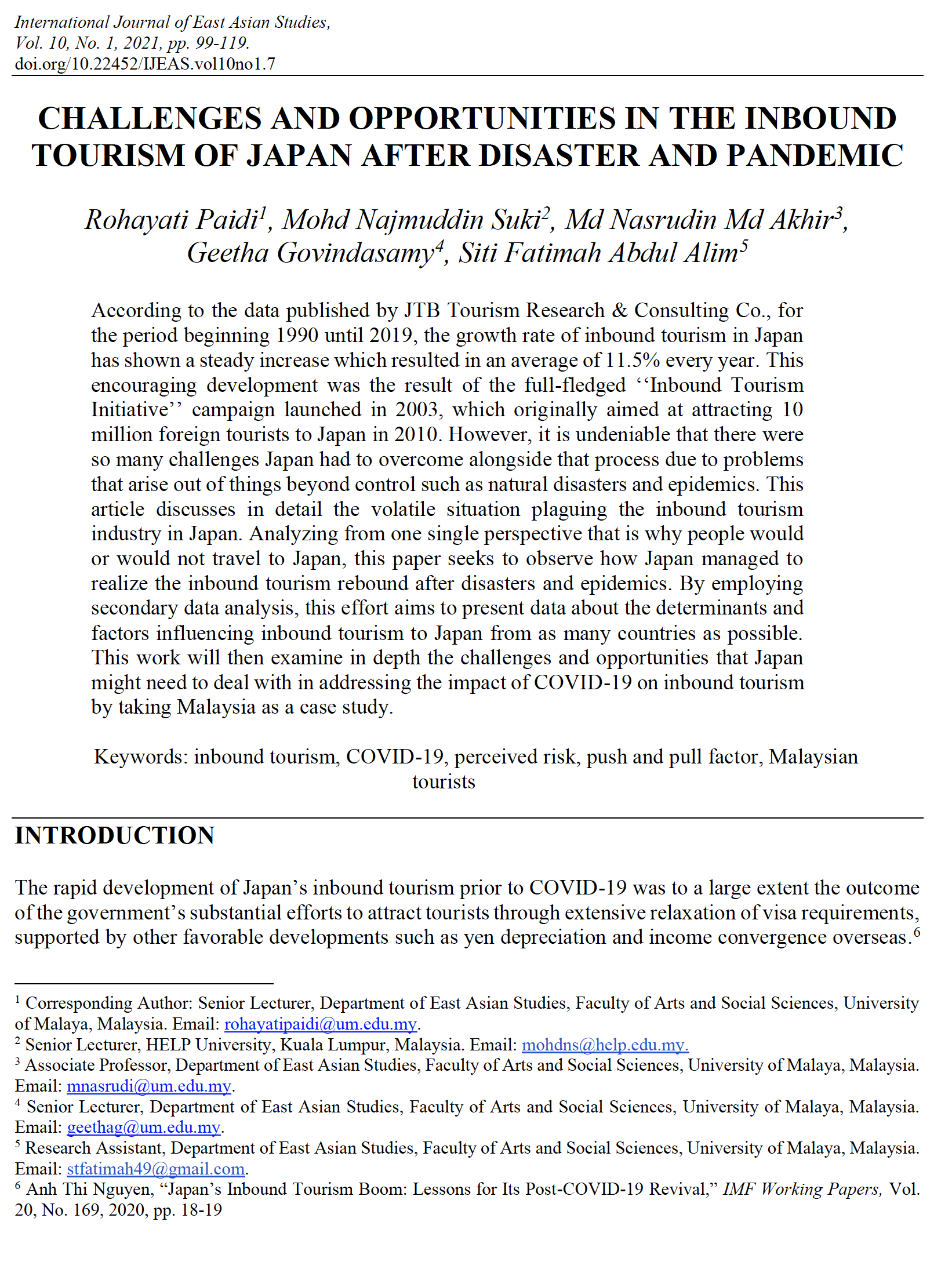Challenges and Opportunities in the Inbound Tourism of Japan After Disaster and Pandemic
Main Article Content
Abstract
According to the data published by JTB Tourism Research & Consulting Co., for the period beginning 1990 until 2019, the growth rate of inbound tourism in Japan has shown a steady increase which resulted in an average of 11.5% every year. This encouraging development was the result of the full-fledged ‘‘Inbound Tourism Initiative’’ campaign launched in 2003, which originally aimed at attracting 10 million foreign tourists to Japan in 2010. However, it is undeniable that there were so many challenges Japan had to overcome alongside that process due to problems that arise out of things beyond control such as natural disasters and epidemics. This article discusses in detail the volatile situation plaguing the inbound tourism industry in Japan. Analyzing from one single perspective that is why people would or would not travel to Japan, this paper seeks to observe how Japan managed to realize the inbound tourism rebound after disasters and epidemics. By employing secondary data analysis, this effort aims to present data about the determinants and factors influencing inbound tourism to Japan from as many countries as possible. This work will then examine in depth the challenges and opportunities that Japan might need to deal with in addressing the impact of COVID-19 on inbound tourism by taking Malaysia as a case study.
Downloads
Article Details
Copyright
Submission of a manuscript to the WILAYAH implies that the submitted work has not been published before (except as part of a thesis or report or abstract), that it is not under consideration for publication elsewhere; that all co-authors have approved its publication. The WILAYAH : International Journal of East Asian Studies adopts CC BY license. As such, we would be grateful if an acknowledgement accompanies the republication that the work was originally published in WILAYAH. The editors will ensure digital preservation of access to the journal content by the Journal depository section.
Disclaimer
Although the Department of East Asian Studies is the publisher of the WILAYAH : International Journal of East Asian Studies, the views presented in the WILAYAH are entirely those of the contributors and do not reflect the official stand of the Department of East Asian Studies. The Department does not hold itself responsible for the accuracy of any article published. Publisher and co-publishers assume no responsibility, nor by the editors for any injury and/or damage to persons or property as a result of any actual or alleged libellous statements, infringement of intellectual property or privacy rights, or products liability, whether resulting from negligence or otherwise, or from any use or operation of any ideas, instructions, procedures, products or methods contained in the material therein.

